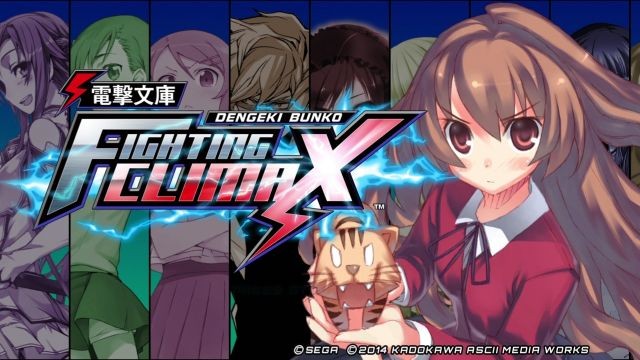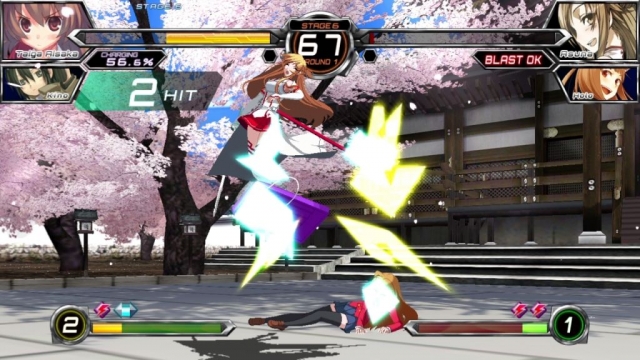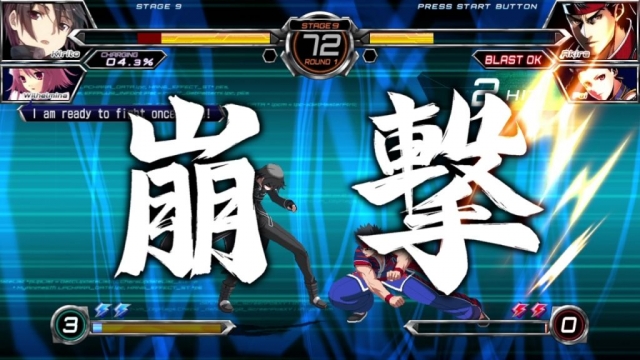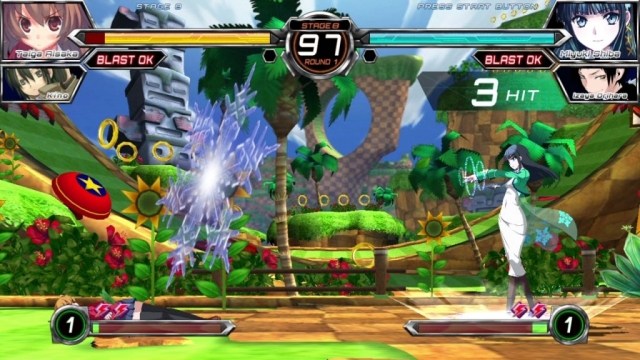Dengeki Bunko: Fighting Climax

Dengeki Bunko: Fighting Climax is yet another top-notch 2D fighter released in the latter days of the PS3’s lifespan. While so many systems succumb to nothing but shovelware at this point, PS3 owners have been blessed with some excellent games to enjoy. This particular fighter brings together the worlds of many Japanese light novel and anime franchises for its roster, and some Sega greatness thrown in.
Characters from The Devil is a Part-Timer, Durarara, Toradora, Strike the Blood, Black Bullet, A Certain Magical Index, and Sword Art Online are here from the light novel/anime realm. Gaming is represented by Akira from Virtua Fighter and Selvaria from Valkyria Chronicles. Pai is also in as an assist character, and those can really turn the tide in a battle. Each character fights in a fairly unique manner, which is impressive given that they’re using so many non-fighting game characters in a fighting game. It would be easy to have movesets that seem odd, but they’re all pretty great.
Taiga is a laugh riot because her style is so comedy-heavy. She’s in a conservative school outfit and sticks to kicking and silly things like rolling into an anime ball of sound effects and vague attacks that do tons of damage thanks to it having about 20 hits contained in it. On one end of the spectrum, you have the screwball comedy there and then you have the super-serious Rentaro slicing and dicing with his swords. Rentaro’s a great mid-range fighter, while Kirito is more of a long-range specialist.
Akira is one of the most interesting roster members because of his drastically different style. He’s a highly technical fighter even in the VF games, but his style did translate seamlessly to Dead or Alive. Here, his gi redesign fits in nicely and adds a lot of panache to his look while his style stands out. He’s got his VF moves, but they seem like just the right amount of out of place given all the other insanity going on. He doesn’t attack with swords, stop signs, or soda machines like the others – and acts as a final boss who uses straight martial arts to win. He isn’t SNK Boss hard, but offers up a fair challenge and his super-serious attitude also comes off as highly entertaining here amid the other chaos. Every character stands out in some way, and they’re all fun to use.
The core game sticks to 2D fighting mechanics that are tried and true – but executed to near-perfection here. This may not be a Sega-developed game, but it has the polish one would expect from a fighting game they created. Everything is easy to do, and whether I played the game on a Dual Shock 3, my Saturn-style USB pad, or 360-style Battlefield 4 controller, the control layout was logical and could be tweaked if needed.
No matter what controller I used, hitting a special attack was as easy as hitting a basic one in terms of getting it done when I wanted to. Super moves are also fairly easy to do and this game has one of the better command lists too, making it very clear which button you’re supposed to hit instead of being vague with numbers instead of button assignments like some fighters on the market. It’s an easy game to just pick up and play, or spend some time with and try to master if you so desire.
Visually, this is a beautiful-looking game. Any 2D fighter in the HD era has a higher expectation placed on it, and Dengeki Bunko lives up to that in every way. Animation is fluid, while character models are full of intricate details. The Sega-themed backgrounds are a joy to see too, even if it is a bit odd to see characters doing battle in Phantasy Star Online’s hub area or the worlds of Sonic the Hedgehog and Nights Into Dreams. The integration of many classic Sega worlds makes this a more memorable experience that it would’ve been otherwise, and gives me hope that we’ll see more done with some of these classic Sega franchises down the line.
Soundtrack-wise, you can’t go wrong with a game full of legendary ’80s and ’90s Sega songs. You’ve got Nights songs, some ton-notch Shinobi stuff, and more modern fare like Valkyria Chronicles to enjoy. A menu-driven sound test option allows you to listen to the highest-quality versions of many of these songs yet in an actual game, and it turns the game from a possible curiosity buy to a must buy if you’re a long-time Sega fan. The voicework is all in Japanese with English text, and that works just fine. Some may want a dub-only approach, but for something so steeped in Japanese culture, this approach feels more authentic.
Dengeki Bunko: Fighting Climax is destined to be a hidden gem. It’s coming out long after the PS3 is a dominant force in the industry. While it may not make use of the system’s power in the same way as something like the Last of Us or Beyond: Two Souls, it does still show that it’s a 2D powerhouse that can deliver gorgeous 2D games for quite some time. This is a smooth-playing game that works well with just about any controller you want to use for it, and it’s one of the best 2D fighters on the system. Anyone who has wanted a new fighting game to play should give it a shot – especially if your PS3 is filled up with them, as you’ll find a lot to enjoy here thanks to its combination of a fairly robust roster and tight gameplay.
Reviewed By: Jeremy Peeples
Publisher: Sega
Rating: 90%
——————————————————————————–
This review is based on a digital copy of Dengeki Bunko: Fighting Climax for the PlayStation 4 provided by Sega.
 Game Over Online
Game Over Online
















